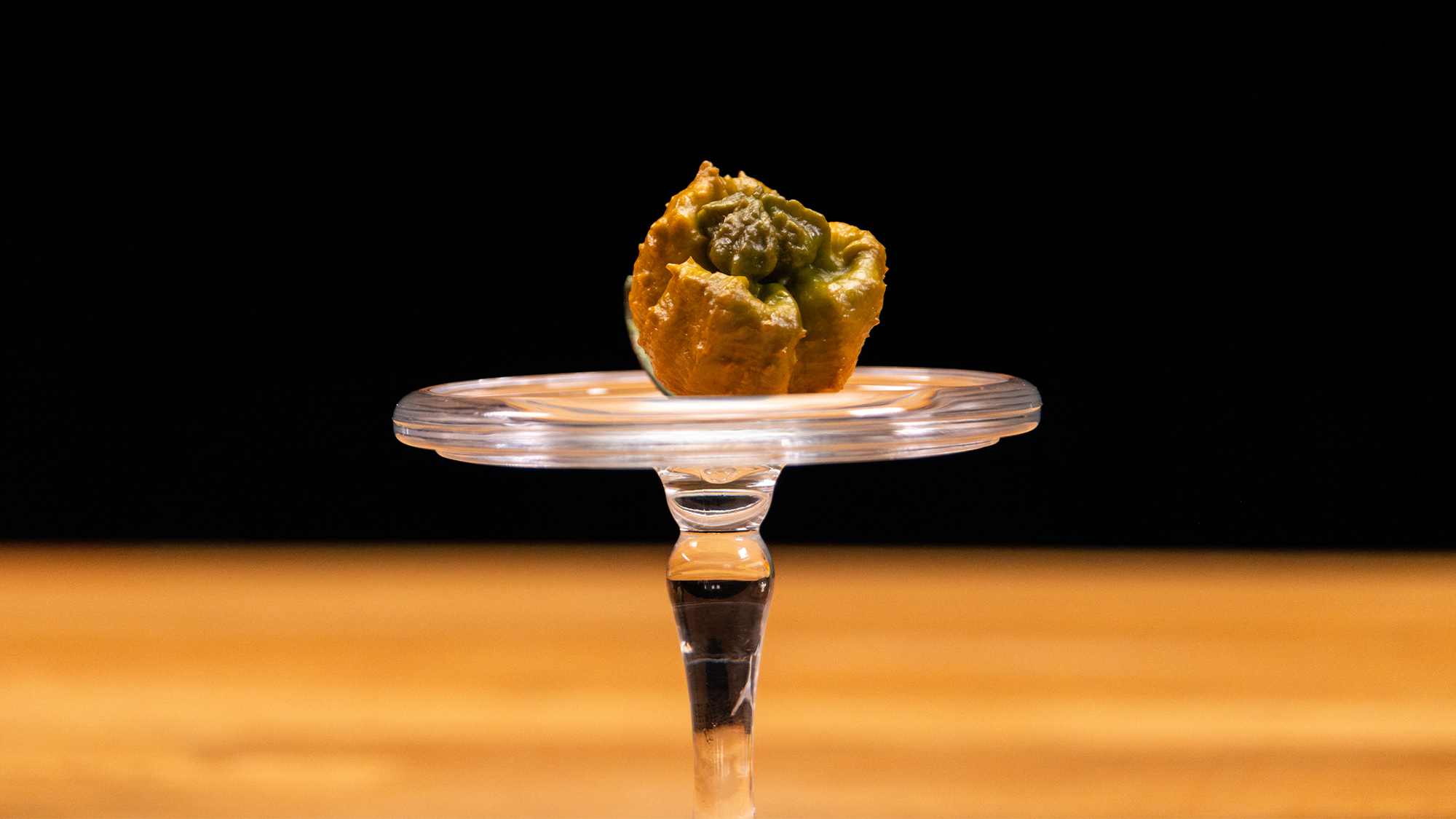

The Guinness World Records officially dubbed Pepper X the world’s hottest chili pepper earlier this year, going public with the announcement on October 9. Pepper X has a rating of an average of 2.69 million Scoville Heat Units (SHU). On the SHU scale, zero is considered bland, while a regular jalapeño pepper registers at about 5,000 SHU. For a non-food comparison, pepper spray used in self-defense is about 1.6 million SHUs and bear spray is about 2.2 million.
[Related: Spiciness isn’t a taste, and more burning facts about the mysterious sensation.]
Winthrop University in South Carolina calculated this off-the-charts Scobille score with specimens collected over the past four years. Pepper X has a greenish-yellow color with grooves and ridges. According to the five brave souls who have eaten it, Pepper X has an earthy flavor once the heat begins to subside.
It dethroned the 10-year reign of the 1.64 million SHU Carolina Reaper, but both peppers were created by the same chili pepper expert to be extra spicy. Ed Currie is the founder of Puckerbutt Pepper Company and has been working on Pepper X since the bright red Carolina Reaper first took the title in 2013.
When creating a new breed of pepper, it can take several years for the desired traits to emerge through selective breeding. It takes about 10 generations for hybrid peppers to stabilize with predictable traits and consistent fruit.
Pepper X was a crossbreed with Carolina Reaper and a mystery pepper that Currie did not disclose. His goal was to create an extremely hot pepper that also had some sweetness. The spice of Pepper X even made an expert like Currie wince in pain.
“I was feeling the heat for three-and-a-half hours. Then the cramps came,” Currie told the Associated Press. “Those cramps are horrible. I was laid out flat on a marble wall for approximately an hour in the rain, groaning in pain.”

A chemical in peppers called capsaicin is what causes the burning sensation when eating a spicy pepper like the Carolina Reaper or Pepper X. Humans and other mammals will perceive capsaicin as a threat when eaten, which sends the strong burning signal throughout the body.
According to University of Tennessee epidemiologist Paul D. Terry, the short-term effects of eating extremely spicy foods range from enjoying the sensation of heat to a more unpleasant burning sensation on the lips, tongue, and mouth. Spicy foods can also cause various forms of digestive tract discomfort, headaches, and vomiting, so it is best to avoid eating them if you experience these effects.
[Related: Leftovers of a 2,000-year-old curry discovered on stone cooking tools.]
Capsaicin is painless except when eaten in large quantities and is likely not harmful over a long period of time. Some experts generally agree that spicy food does not cause stomach ulcers, but the association with stomach cancer isn’t as clear.
The burning sensation also releases endorphins and dopamine. Currie began growing peppers after overcoming addiction to drug and alcohol and says that kick is a natural high for him. He shares the peppers he creates with medical researchers, in hopes that they can be used to explore new cures for disease or help those with chronic pain or discomfort.
Correction (October 21, 2023): An earlier version of the story mistakenly said that capsaicin is harmful except when eaten in large quantities. It should have said that capsaicin is not harmful.
